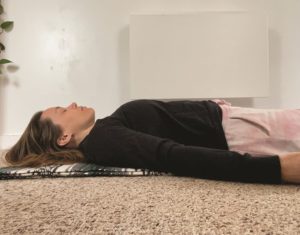Western culture urges us to create lives that are outward facing. We measure the progress of our existence by external gains. We work, attain promotions, have families, perform chores; we socialize, gather information, and seek out entertainment and joy. This leaves little room for introspection and exploration of our internal landscapes. Even our way of practicing yoga is mostly externalized and focused on the physical.
I came to a yoga practice by way of action. I went to packed classes with athletic sequencing and where the most flexible students were celebrated and the teachers spoke a language I barely understood. I liked it.
Each class was a blissful escape from my everyday life. It was like being contained, for a while, in a place where my body could be worked to the point of exhaustion and my hyperactive mind could be entertained until it focused.
Countless trainings, practices, and injuries later, I began to see that compartmentalizing my yoga to those 60 to 90 minutes a day, in a studio, was not actually helpful. The fissure between who I was there and how I felt outside of the studio was massive. I’d namaste all day in a studio and then flip off reckless drivers on the way home. I’d feel relaxed after class, but then tense up the moment I had to confront a friend. In the 20 minutes it took me to get from the yoga studio to my parents’ house, I would lose all traction on Yogic Emma and slip back into Annoyed Daughter.

Over a decade later, I still slip, but the fall is shorter. To close the gap, I attended Vipassana meditation and restorative yoga trainings, took workshops, journaled, went to therapy, took morning vows of silence — anything to slow me down and turn inward. What I knew was that I could no longer count on a 90-minute hot yoga class to exhaust my body and mind and become … nicer.
Enter yoga nidra. Unlike meditation, where the point is to cultivate concentration, yoga nidra is a practice of surrender and withdrawal.
Meditators do their thing seated, either cross-legged on a cushion or in a chair. The practice involves attending to a single point of focus and not straying from it. Yoga nidra is practiced lying down and means getting as comfortable as possible and being guided through relaxation.
While you can practice both meditation and yoga nidra on your own, it’s best to have a guide in the beginning. I have found Tracee Stanley and her book Radiant Rest and Rod Stryker of Para Yoga are both good resources on yoga nidra.
From afar, it looks like a nice nap. From within, it is a systematic relaxation of the body and mind. Though a nidra practice is passive, it can be a little difficult to set up. As adults, we aren’t used to taking time out of the day to foster rest. And we are used to withstanding discomfort.
Many teachers encourage nidra students to create nests, supporting the head and the knees, and covering the eyes with a scarf. The idea is to adjust and support yourself until you can be completely still. It can be quite easy to fall asleep during yoga nidra, as it is meant to induce a state that’s somewhere between waking and sleeping.
To practice, you need only a few things: the desire to relax, a good guide (many are on YouTube), and a quiet and comfortable place to rest. If you fall asleep easily, keep your elbow on the ground but put your hand in the air. If you fall asleep, the hand will fall and the motion will wake you.
Prioritizing our inner lives for a while, rather than looking ever outward for validation and truth, can look a lot different than we think it will. For one thing, it’s not as complicated as our fast, external thoughts often make it seem.
Imagine your whole body relaxed (not fidgeting can be difficult), a gentle voice guiding you through visualizations, a place between waking and dreaming; this way out of the mad rush of life can feel like a nap, a time warp, or, as many call it, “enlightened sleep.”
Whatever you call it, it’s a way to soften all the hard edges, to slow down, to cultivate ease.



